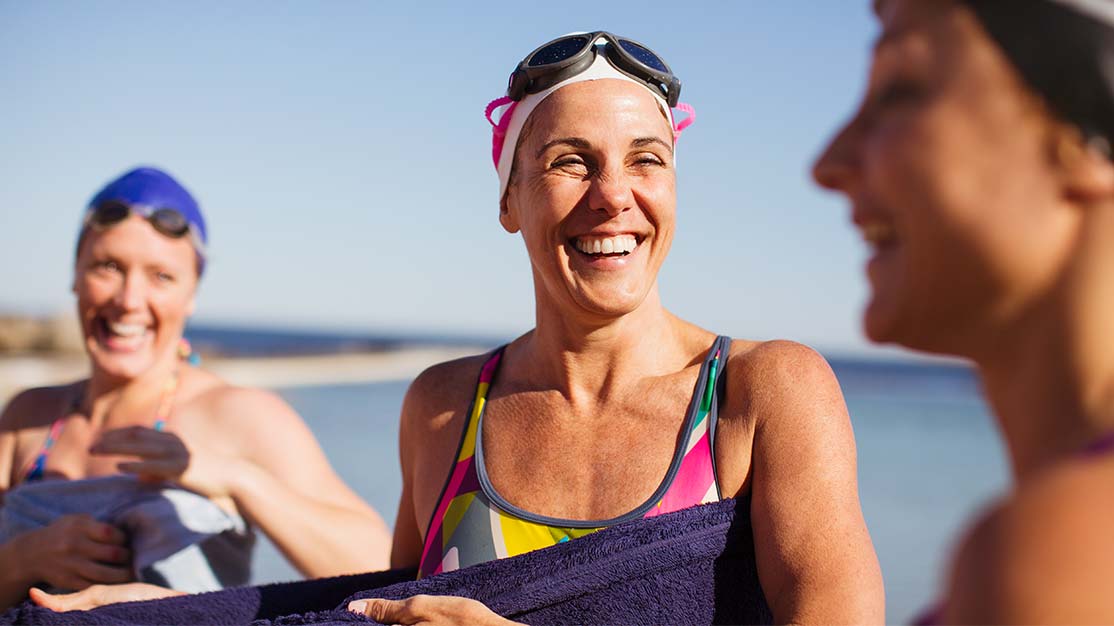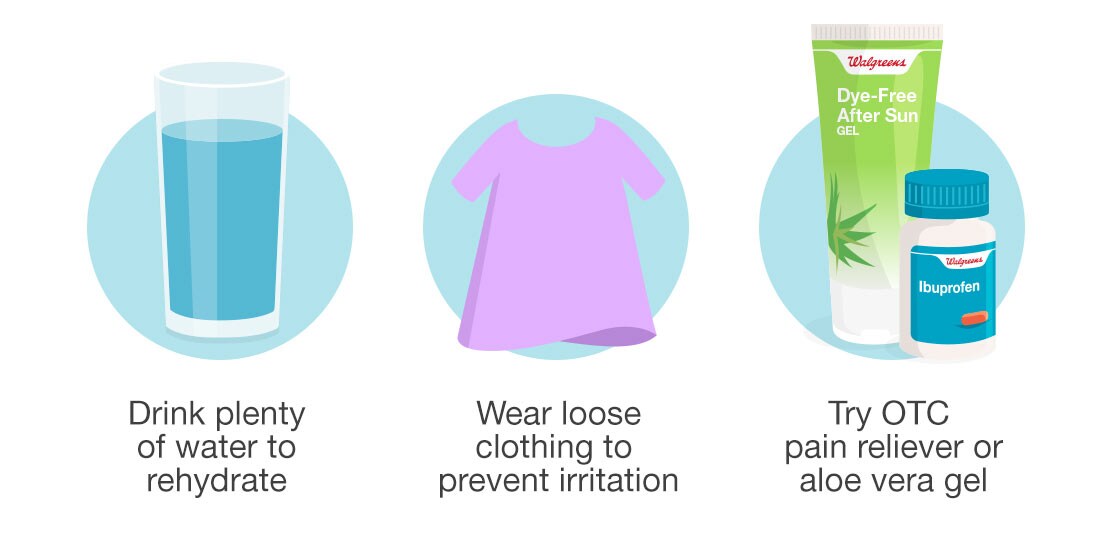Sunburn: Tips for After Sun Care

Enjoying the sun outside this summer might end up burning your skin.
Sunburn can cause temporary pain and long-term damage. Overexposure to the sun's ultraviolet (UV) radiation can result in sunburn, which is pink or red skin that may sting or feel hot to the touch. Excessive and/or multiple sunburns cause your skin to age prematurely and increases your risk of developing skin cancer. But there are many effective ways to protect your skin from damaging UV rays. Learn more about sunburn, from sunburn protection to sunburn relief.
How sunburn happens
Overexposure to UV light, from the sun, tanning beds or other sources, can cause skin on any part of your body to burn. A sunburn happens when the amount of exposure to UV light exceeds the ability of melanin to protect your skin. Melanin is your skin's pigment or protective coloring. In general, people with light skin have less melanin than people with darker skin. This is why very fair-skinned people burn more easily. But even if you have naturally dark skin, you can still be at risk for skin damage from the sun.
Sunburn symptoms
Sun exposure can cause first- and second-degree sunburns. Often, you may not know that your skin is burning until it's too late. Sunburn symptoms may not appear for three to five hours after exposure, and the full effect may take a day to show up. Symptoms of sunburn include:
- Red, warm and painful skin. Pain usually peaks between 12-24 hours after sun exposure, and lasts about 72 hours. Some people also report a sunburn itch.
- Sunburn blisters that may show up hours or days after sun exposure.
- Peeling of the sunburned layer of skin days after exposure. A peeling sunburn is common.
- A severe sunburn can cause fever, chills, headache, nausea or a rash. Other symptoms can include blistering and swelling of the skin. This bad sunburn is sometimes calling sunburn poisoning or sun poisoning. Severe cases of sunburn require medical attention.
How long sunburns last
Sunburn lasts about 3-7 days, and blisters take about 7-10 days to heal. While sunburn is only temporary, it can cause lasting skin damage. Sunburn increases your risk for skin cancer and can cause early aging of your skin.
How to treat sunburn
Many people want to know how to get rid of sunburn. The good news is that you don't have to treat sunburns in most cases. However, if you have severe blistering over a large part of your body, a fever or chills or feel weak, dizzy or confused, see your health care provider.
Even though sunburn heals on its own, it can be very painful. Many people search out sunburn remedies to soothe irritated skin. Try these home remedies for sunburn as soon as you first notice your sunburn:

- Take a cool shower or bath, or place cool washcloths on burned areas of skin.
- Drink plenty of water. Sunburn draws water to your skin, away from the rest of your body. This can dehydrate you.
- Wear loose-fitting clothing to prevent irritation.
- Consider using an over-the-counter (OTC) hydrocortisone cream to help reduce skin inflammation and relieve itching when your skin is healing.
Try an OTC pain medication, such as acetaminophen or ibuprofen, to ease discomfort.
If you don't have blisters, apply a moisturizing cream that contains aloe vera and soy when your skin is damp. This can help soothe sunburn. Applying a cream or sunburn lotion with vitamins C and E may help limit skin cell damage. Do not apply butter, petroleum jelly or other oil-based products. These products can block pores, keeping heat and sweat from escaping, which could make the burn worse and lead to an infection. You also shouldn't use products that contain benzocaine or lidocaine, as these ingredients can make skin irritation worse.
If you have blisters, consider placing dry bandages on them to help reduce the chance of infection. Don't pick at, scratch or peel away blisters. Doing so could increase the risk of infection.
While your skin is healing, be extra cautious about protecting your skin from further sun damage. Wear clothing made from tightly-woven fabric over sunburned skin when you're outside.
Sunburn prevention
When it comes to sunburn, prevention is the best medicine. You can protect yourself from the sun's harmful UV rays by doing the following:

Apply a broad spectrum sunscreen with an SPF of 30 or higher on all exposed skin before you go outside. "Broad spectrum" means the sunscreen shields against both types of harmful UV rays, UVA and UVB.
Generously reapply sunscreen at least every 2 hours. Reapply it right away after swimming, sweating or toweling off.
- Use a lip balm with sunscreen to reduce the risk of sunburned lips.
Wear a wide-brimmed hat, sunglasses with UV protection and light-colored clothing.
- Avoid the sun between the hours of 10:00 a.m. and 4:00 p.m. This is when the sun is at its peak and UV rays are strongest.
- Seek shade whenever possible.
Clinically reviewed April 26, 2021.
Sources: